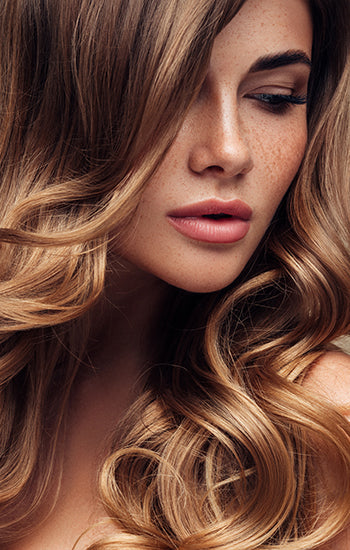January 07, 2022

It’s easy to knock out a hair product that makes hair look and feel instantly better. Drugstore shelves are full of them. Apparently crack cocaine makes you feel instantly better too. It’s almost as good the second and third time too so I’ve heard.
But the real ingenuity with creating hair care products is to make it look and feel better today without the side effect of worse hair health tomorrow. And this is where 95% of hair products can fall down.
Cosmetic enhancers fool you into better looking hair today but can slowly destroy the hair underneath so that soon you cannot do without the fake mask. You may have heard the marketing term, ‘Sell the sizzle not the steak’ ? Don't be fooled.
Here we look at how marketeers play sleight of hand with our thinking and our emotions to sell us stuff. You’ll be better prepared with a little knowledge.
If your hair looks or feels dry, fluffy, frizzy, coarse, heavy, dull. If you get breakage and split ends. If your hair is noticeably thinner at the ends than the roots. If you are seeing more of your scalp than you feel is normal. If you struggle to style your hair and then styles don’t last. Or if your colour fades out too quickly. Read on. It may not be your hair’s fault, but the silicone hiding in your products.
Because we have unrealistic expectations and want it all to appear lovely - right now, we are vulnerable to exploitation. Haircare’s gift to marketers was silicone. It’s in 99% of cheaper hair products and most premium products – but not in ours. Slip silicone over your hair and it looks smooth and shiny. It can make hair look lovely today by coating it in a cling film sheath. Soft, silky, all better? Not really.
Silicone can displace moisture in the hair and prevents the hair from reabsorbing moisture from the atmosphere by osmosis to get back in balance. The protein structure becomes more brittle, less flexible stable, and breaks down a little more. Keep pressing repeat, and this is the thinning and aging process of hair being sped up by silicone coatings. Then that thinner hair is permanently less able to hold as much moisture so the downward spiral continues on its way to even thinner, brittle, broken, split hair.
![]()
Why do most people not make the link? Not even hairdressers? Because a quick fix of silicone makes it all better now and that emotional feeling is what’s remembered. It’s the same with low fat foods that make you fatter. The salt and sugar used to replace the fat make it tasty. When you get back on the scales and ponder the extra pounds, the ready meal won’t take the rap because it said ‘low fat’ on the packet and we believe everything we read. Don’t we?
When I see ‘Moisturising’ or ‘Hydrating’ on the front of a silicone-rich hair product I can get into a fit of pique over the dishonesty. Moisture is water. Hydrating is water from the ancient Greek ‘hydor’.
"Give me a word, any word, and I show you that the root of that word is Greek."
– My Big Fat Greek Wedding
My mother is Greek and I love that line. Silicones are mostly hydrophobic, that is, they push water away. They won’t say silicone on the pack though, it’ll be the scientific names. Look on the ingredients list for: cyclopentasiloxane, dimethicone, trimethicone, amodimethicone, any...cone or...conol. If these ingredients are near the front of the INCI list you can be sure the flowery naturals afterwards are just worthless marketing pap. The silicone will be dominating the effect. And not in a healthy way.
What they’re really offering is lubrication NOT hydration. In the same way that engine oil lubricates, it doesn’t hydrate or moisturise the engine. It lubricates. Engine oil incidentally is also hydrophobic, as the birds and fishes discover when a tanker crashes, and you’d discover as well if you washed your hands, face and hair in it for a few weeks. They certainly won’t feel moisturised.
So, to wind back and recap – healthy hair is made of 97% protein and 3% water. Remember, God put zero silicone or argan oil in hair. Keeping enough water in the hair stabilises the protein structure, to stop it breaking down so quickly. Hydrophobic oils and silicones can lubricate the hair and fool you into thinking it’s all better. But in reality, it’s a fake better and by displacing real moisture they can actually dry the hair out further and accelerate the journey to thin, brittle, broken, split hair.
LifeSaver is a system of haircare.
Some people buy our 3’’’More Inches LifeSaver Treatment but then use it with competitor shampoos and conditioners. Because these are likely to contain silicones, they will reduce the absorption of LifeSaver and so reduce its effectiveness. Better to use our LifeSaver with the appropriate shampoo and conditioner. Volumising, Moisturising, UV Protective, or Scalp Exfoliating. All silicone free and infused with the key cashmere amino acids to support LifeSaver in repairing and strengthening your hair.
March 24, 2023
March 20, 2023
March 20, 2023
How many Bobs have you got?
These quick clunky haircuts are becoming prolific as hairdressers become less and less able to layer hair properly. Emily had the very common 3-step Bob. The baseline, a step four inches off the bottom, and a sort of torn irregular piece suggestive of a long

Exclusive Offers Every Month
Sign up to our newsletter to receive 15% off your first order.